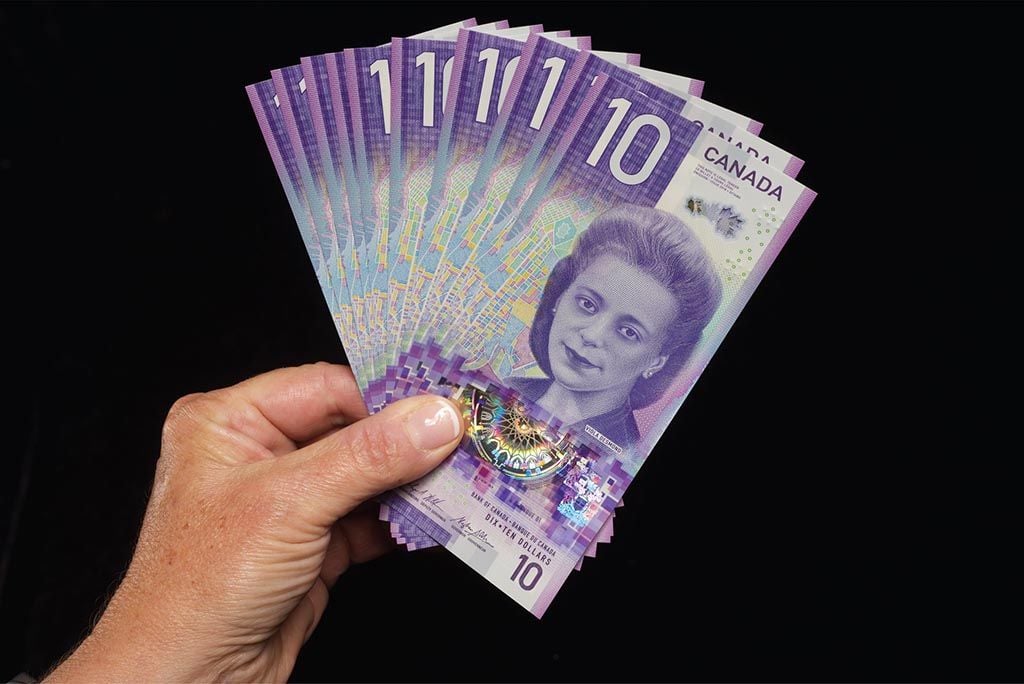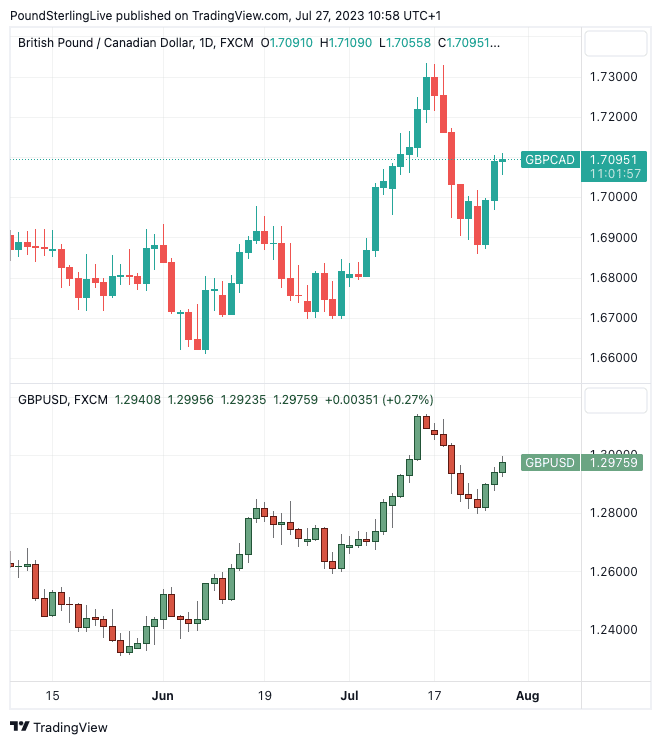Canadian Dollar Suffers Fed Setback
- Written by: Gary Howes
-

Image © Bank of Canada
The Canadian Dollar's July rally against the likes of the Pound and Euro has suffered a setback and is at risk of reversing in the wake of the July Federal Reserve interest rate hike and guidance update.
The Fed raised interest rates again but was vague on the prospects for further rate hikes, prompting markets to sell the U.S. Dollar, as well as the Canadian Dollar crosses.
Studies confirm the Canadian Dollar is highly attuned to developments in the U.S., which is understandable given the dominant trading relationship and geographical proximity between Canada and its southern neighbour.
Movements in U.S. interest rates, therefore, matter for the Canadian Dollar, which can oftentimes be considered a U.S. proxy. In fact, a look at the Pound to Canadian Dollar exchange rate (GBPCAD) reveals it to be highly correlated with the broader U.S. Dollar.
Placing a GBPCAD chart alongside a Pound-Dollar (GBPUSD) chart confirms this close correlation, allowing us to identify USD-specific drivers behind GBPCAD:
Above: GBPCAD (top) and USDCAD.
The Fed said midweek it remains in a data-dependent mode and the prospect of a September or November rate hike would depend on the tone of incoming data, leading investors to turn their gaze to August's U.S. jobs and inflation reports for guidance.
Markets look for rate cuts from early in the year, but Fed Chair Jerome Powell said he saw rate cuts as more of a consideration "a full year from now".
Incoming data might surprise in either direction, but it is clear the peak in interest rates is close at hand and the prospect of lower interest rates in 2024 awaits.
For markets, the hard yards have been crossed and this is consistent with further U.S. Dollar weakness, as has been the dominant FX trend of 2023.
For the Canadian Dollar specifically, further weakness in the USD could mean further weakness in its crosses, with GBPCAD upside likely to extend on any renewed USD weakness.











